This is a review of the Sightmark Citadel 1-10×24 HDR. This is an affordable riflescope for short- to mid-range shooting and hunting. It comes either with a CR1 reticle (for close- to mid-range shooting and quick target acquisition) or an HDR reticle, great for close- to mid-range hunting. Both reticles are in the second focal plane.
LPVO Reviews @ TFB:
- Schmidt & Bender 1-8×24 PM II ShortDot Dual CC (FFP)
- Delta Optical Hornet 1-6×24 SFP Riflescope
- Kahles K18i Riflescope with IPSC Reticle (incl. Comparison)
- Vortex Razor HD GEN III 1-10×24 (FFP)
- Vortex Strike Eagle 1-6×24 AR
- Vortex Razor HD 1-6X24 Gen II-E
Low Power Variable Optics (LPVOs) for the AR platform combines versatility and precision, but these riflescopes can of course be used for other rifles as well. Typically these optics range from 1 to 4, 6 or 8 magnification, but Sightmark went beyond that in this riflescope. You can seamlessly transition between close-quarters engagements and mid-range targets, and if you go beyond 8 power, you can comfortably reach even longer – until the point where your ballistics will probably be a bigger issue than the optic itself.
Below: The Sightmark Citadel 1-10×24 HDR in a Spuhr SP-3002 Ø30 mm mount (38 mm/1.5”).

The Sightmark Citadel 1-10×24 HDR with the Pulsar Proton Thermal Clip-On mounted. Note the adapter from Rusan for the 30 mm tube, and you get a thermal option that blends in really well on top of almost any rifle. There are now much more powerful thermals from Pulsar.
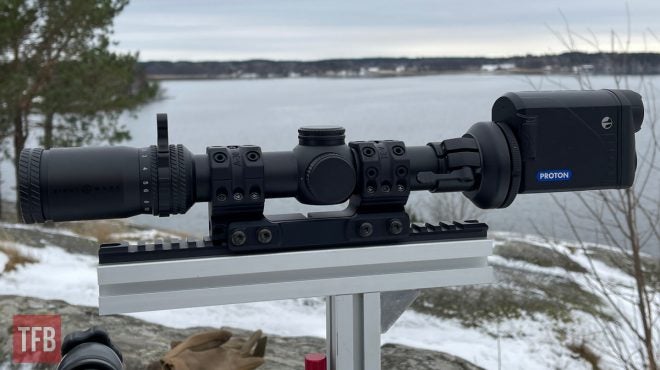
The Citadel 1-10×24 rifle scope is equipped with capped low-profile turrets, featuring windage and elevation adjustments of ½ MOA per click. You can easily fit a red dot in the 12 o’clock position, or on the side and still have full visibility. It has an IP67 waterproof rating, shockproof durability, and fogproof capabilities, to ensure reliable performance in various conditions. Additionally, it includes a throw lever and flip-up caps (not shown here), adding convenience.

There’s a cat tail included in the package and the price is very nice.
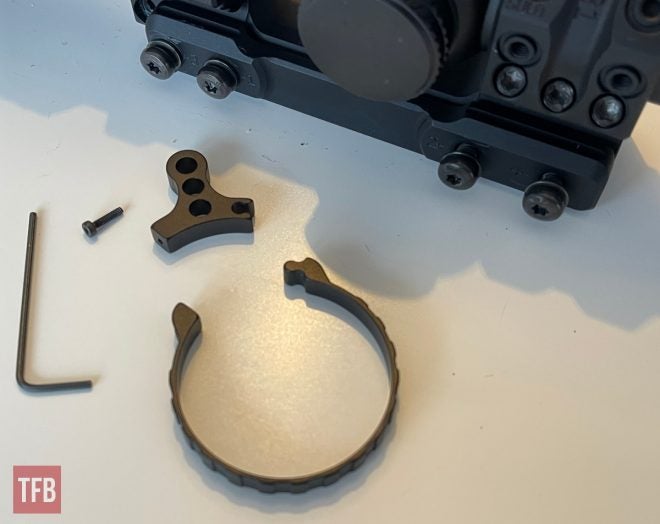
Sightmark Citadel at 1x. Distance 500 meters+. There is also a CR1 reticle, which is not tested or seen here, but it’s probably more for the sports/tactical market so check it out if that is more your thing. The “ring” around the center optics is pretty thick, and the eye box is not as forgiving as Swarovski’s, but it still works well.

The Swarovski Z6i as a reference. Pretty sweet eyebox!

The 1x magnification allows for quick target acquisition with both eyes open, mimicking a red dot sight, while the variable zoom caters to scenarios demanding enhanced magnification.
Sightmark Citadel at 3x.
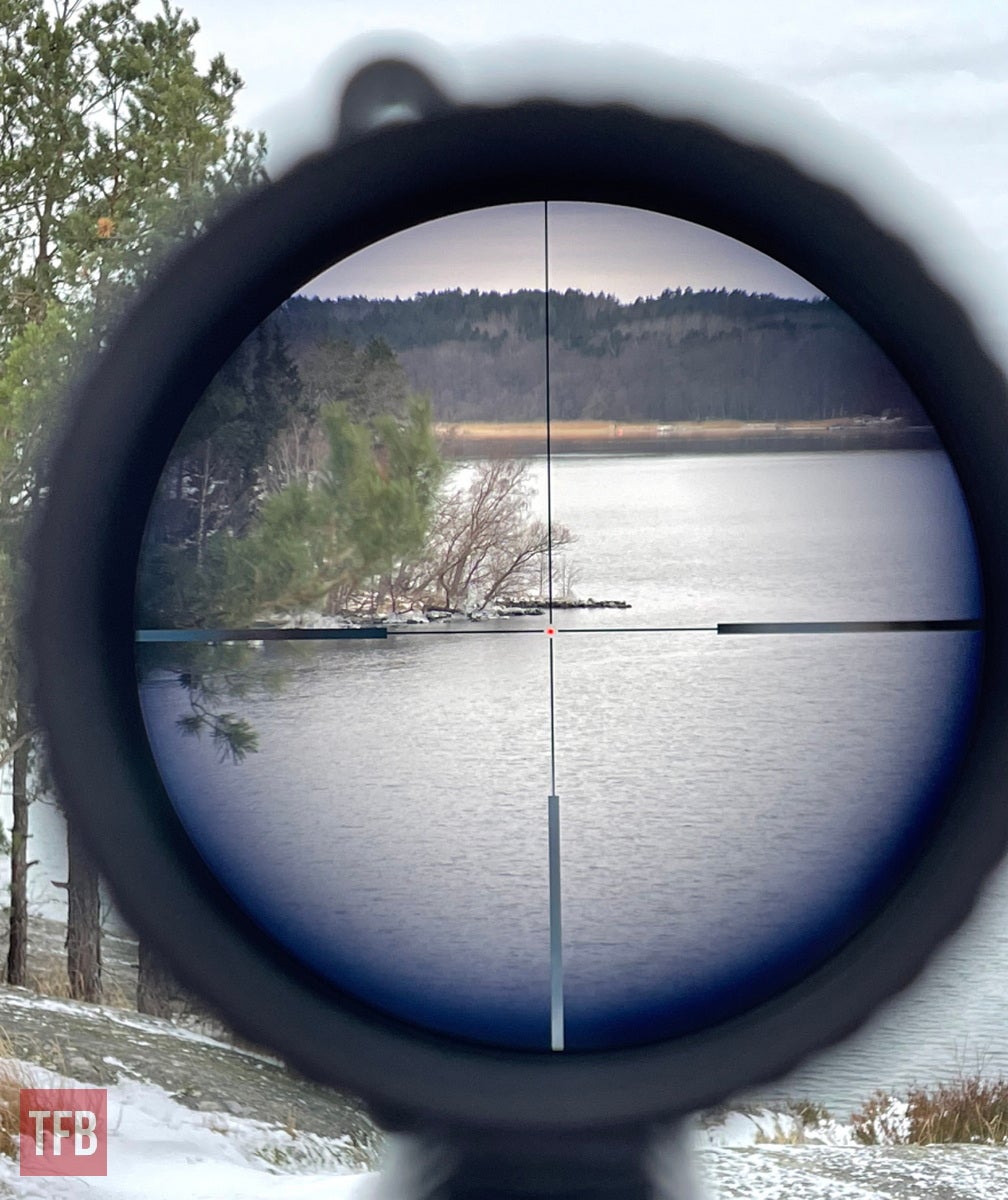
Sightmark Citadel at 6x, but we’re only just halfway over the zooming range.

Sightmark Citadel at 10x. The lenses are multi-coated and fine-etched. This is the red-illuminated hunter dot reticle, with 11 brightness settings.

Sightmark Citadel at 10x. We begin to see details like cracks in the concrete bridge.

Sightmark Citadel 1-10×24 HDR
The Swarovski Z6i at 6x (different time of day and angle).
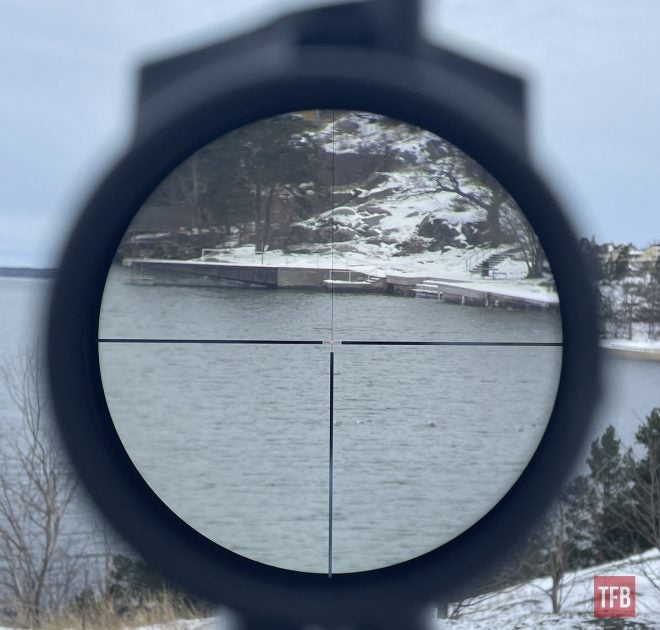
Sightmark Citadelat 10x. The reticle is powered by one CR2032 battery.

Swarovski Z6i at 6x as a reference.

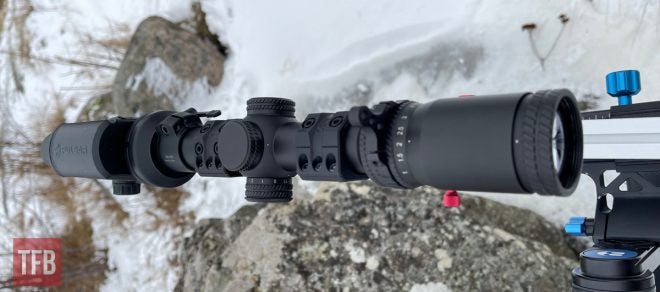
Sightmark Citadel at around 1.5x with the Pulsar Proton Thermal mounted in front. Winter, -6C and almost no thermal signatures.

The Sightmark with some thermal company.
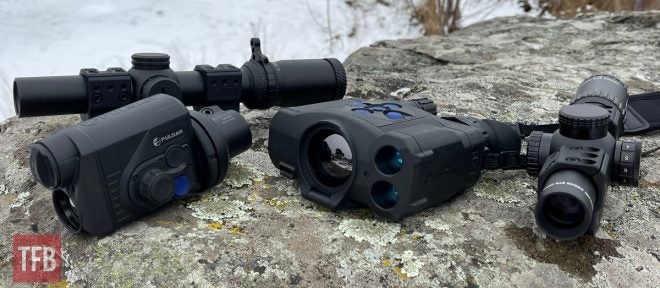
Here’s the HDR reticle. The maximum brightness of the illumination is fairly low.
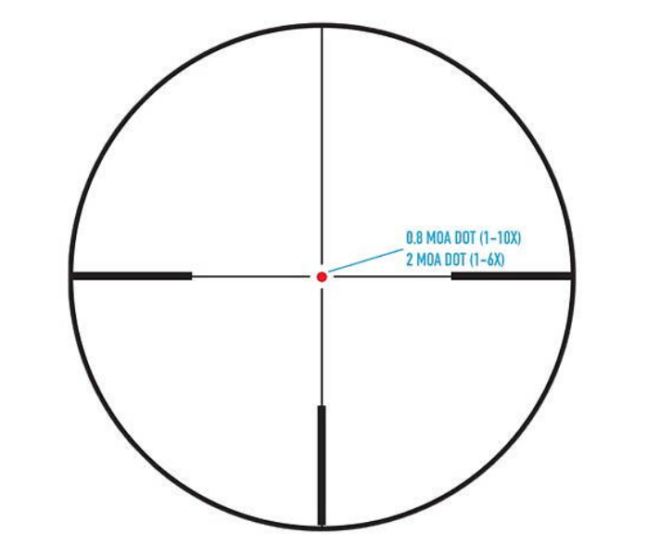
Pricing
TFB normally only quotes the suggested retail price, and here it gets a little tricky as we don’t have this figure for any of the markets. In Europe, the price seems to be around €579. In the USA it seems it retails in the region of $400. As a reference, the MSRP for the Swarovski Z6i Gen2 is $2,399 (Source), which is about 6 times more than the Citadel.
Below: JP Rifles with a .22LR upper for training on steel. This lower has been to Russia and Sweden, for two IPSC Rifle World Shoots (using .223 Rem). When shooting and plinking steel like this, it became quite evident that the scope works just fine, but the field of view and the eye box are limited compared to high-end scopes. The road to the third IPSC World Shoot in Finland 2024 has begun…and the Citadel works just fine under these cold conditions.
Why are these features important you may ask? A wide FOV makes target transitions easier and faster. A generous eye box is more forgiving to where you place your eye, and won’t give you a “blackout” as easy. This is important for competition (and perhaps for the driven hunt), but if your shooting preference is different, there’s no need to bother.

JP Rifles Rimfire with a Saki suppressor, with Sightmark Citadel 1-10×24 HDR Riflescope in a Vortex mount.
Conclusion
I have a tendency to love high-end and (unfortunately) high-priced riflescopes. The Citadel 1-10×24 HDR proves that a perfectly usable riflescope doesn’t always have to be priced beyond reach for most consumers. When I started using LPVO some 15 years or so ago, the low-cost options were usually quite horrible in terms of optics and illumination, but luckily some of that has changed dramatically in the last decade. LPVOs are indispensable for dynamic shooting situations, and it’s wonderful to see that there are so many good optics out on the market that don’t cost a fortune.
The field of view and the eye box are more limited than on high-end scopes, and the magnification ring has more friction than I prefer, but that still makes the Citadel 1-10×24 a great purchase as the total package works just fine – and considering the price it’s a bargain!
We are committed to finding, researching, and recommending the best products. We earn commissions from purchases you make using the retail links in our product reviews. Learn more about how this works.
 Your Privacy Choices
Your Privacy Choices
